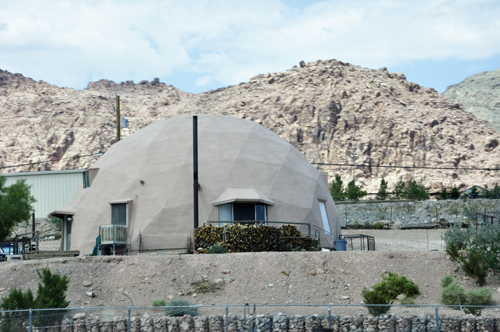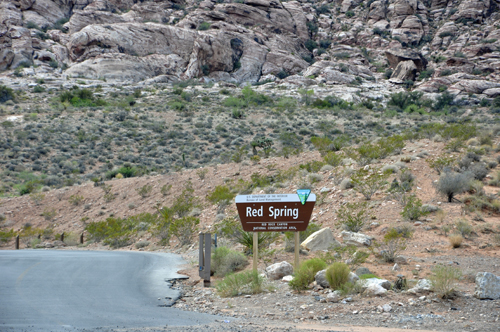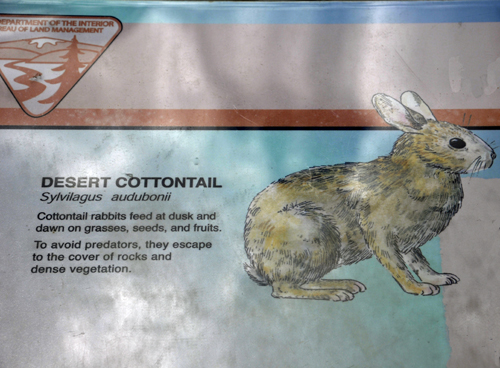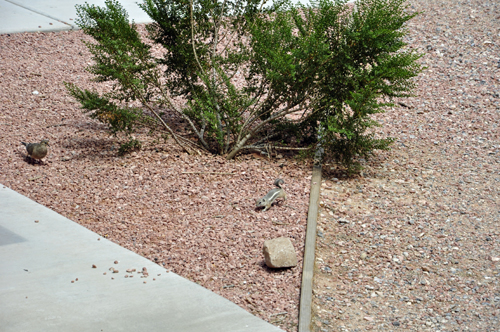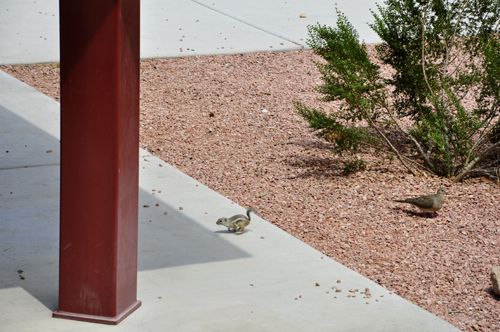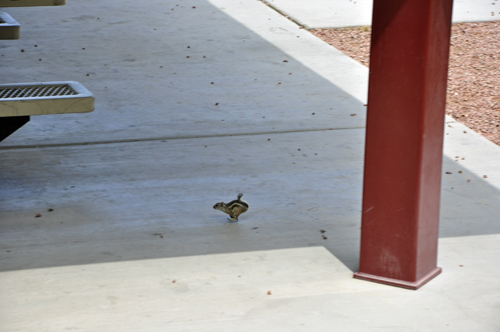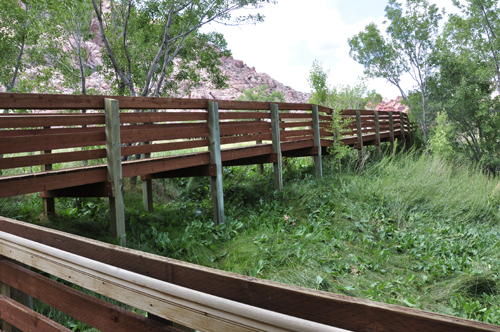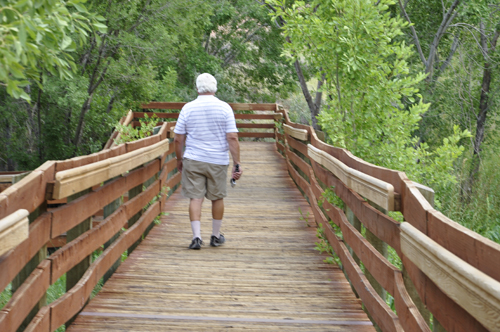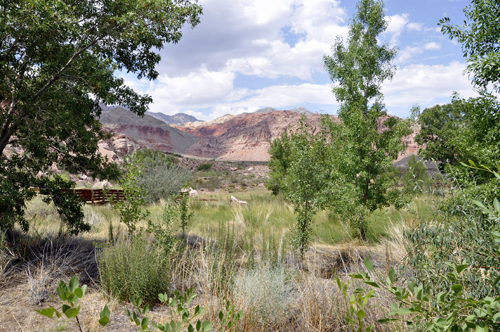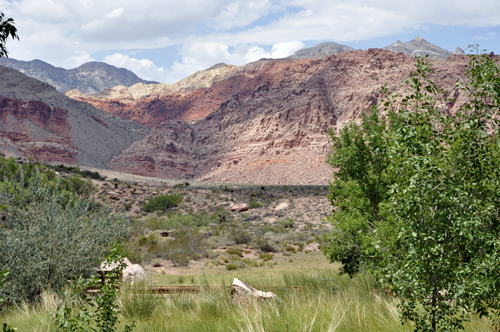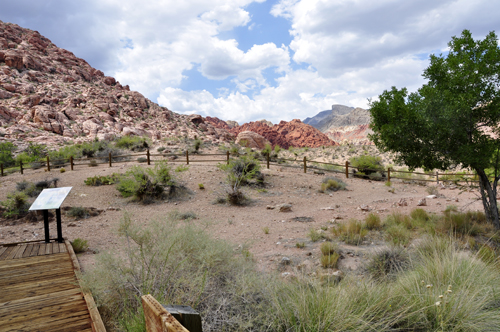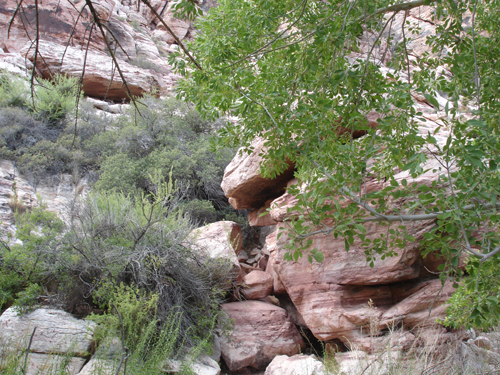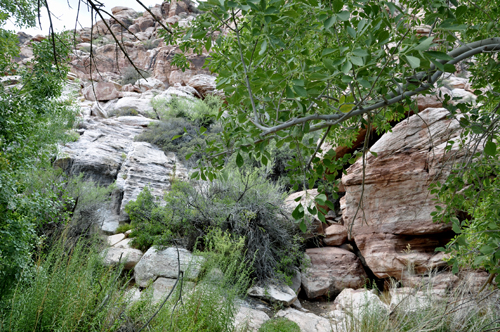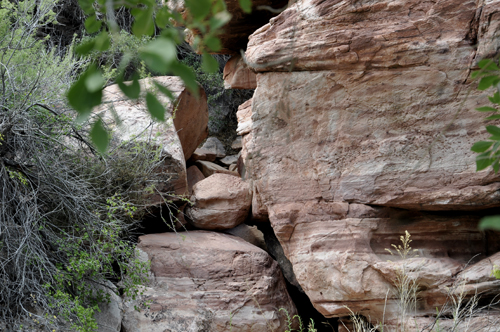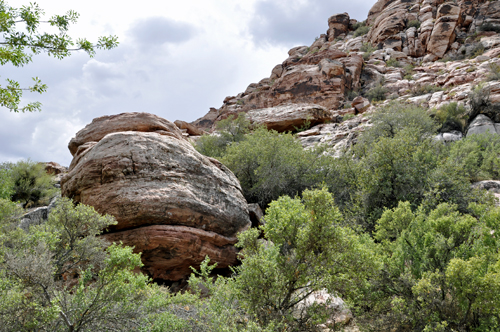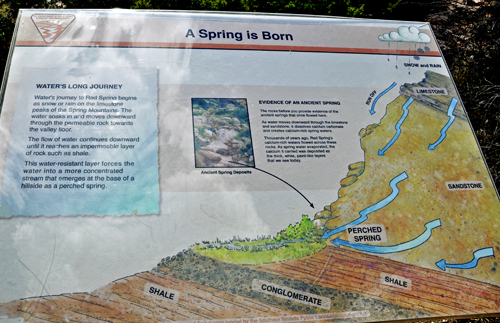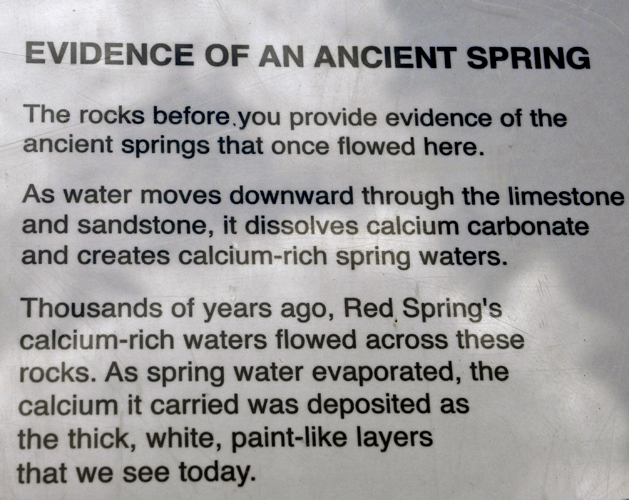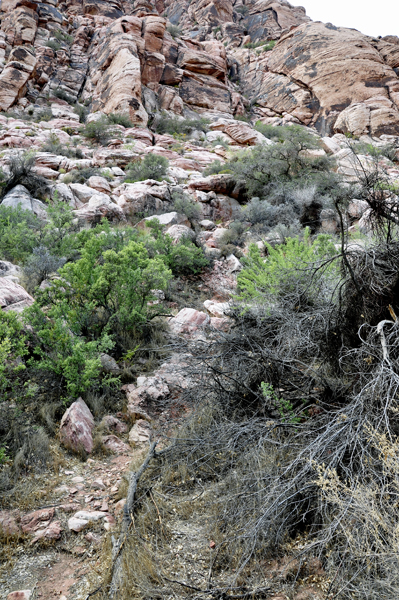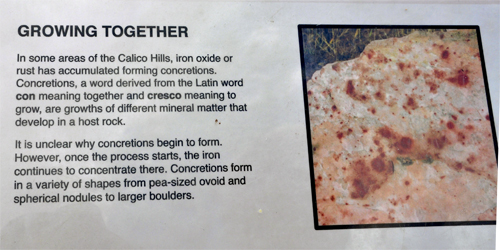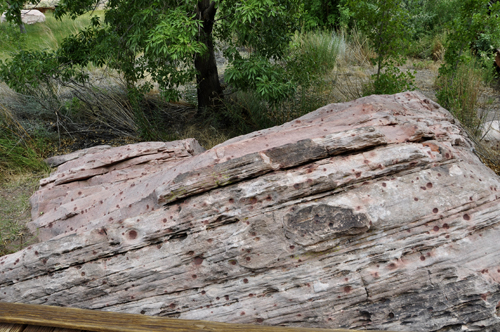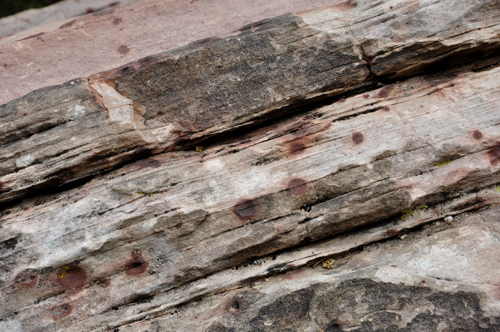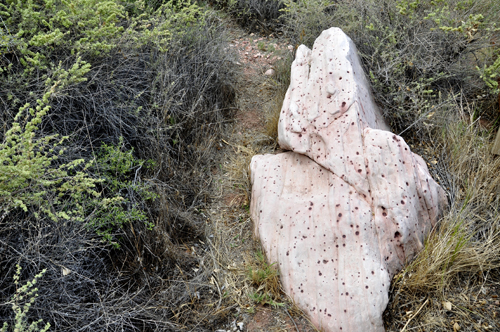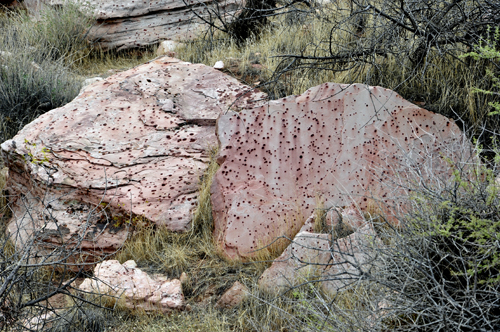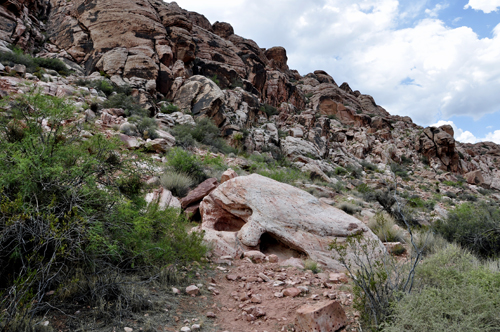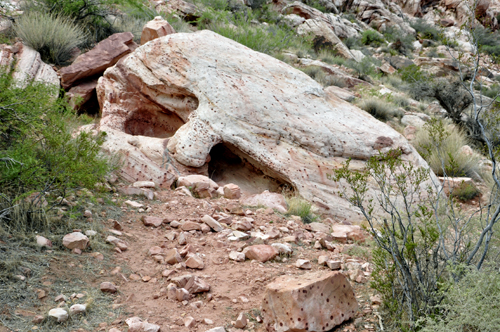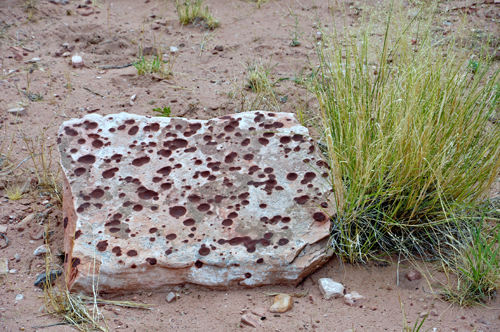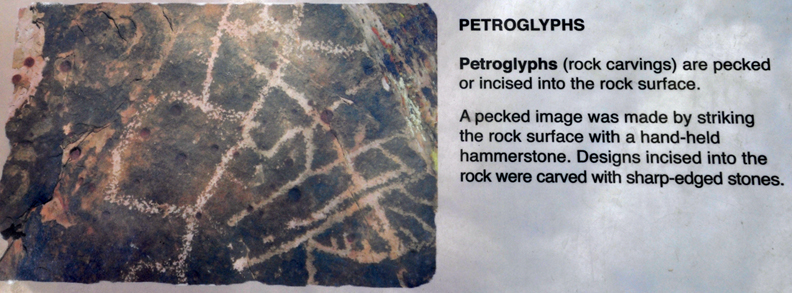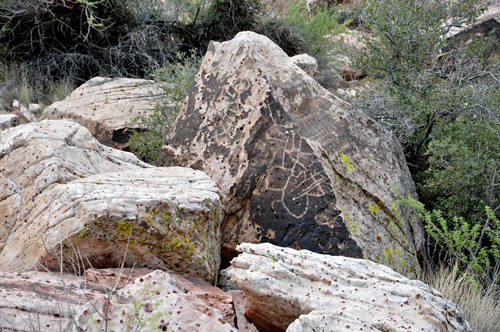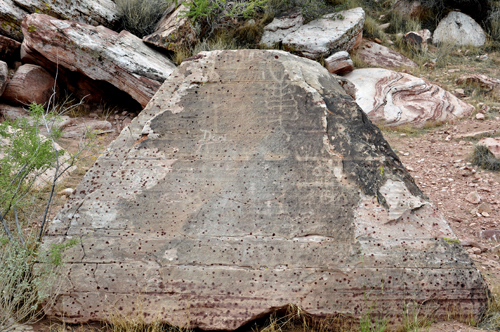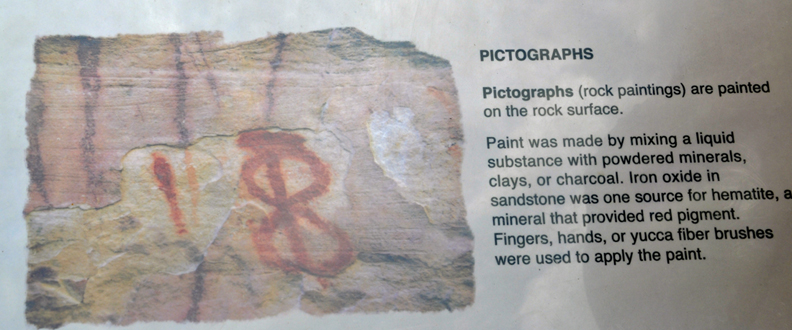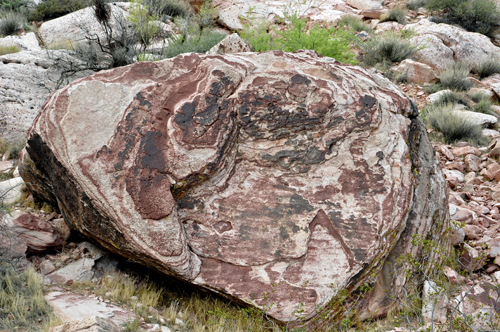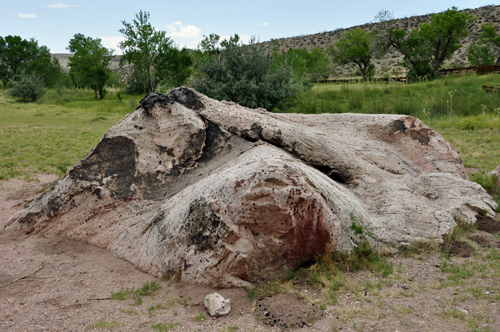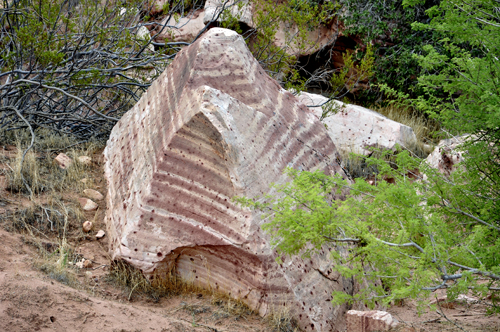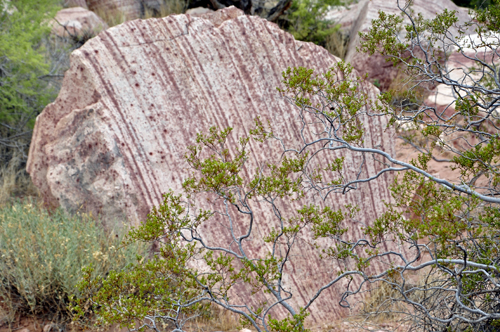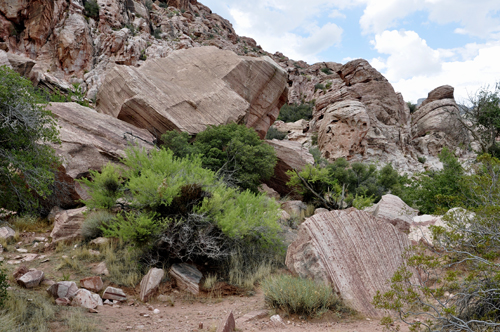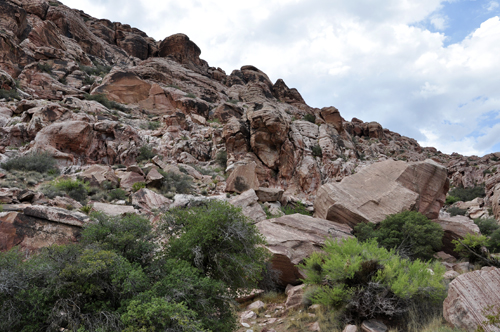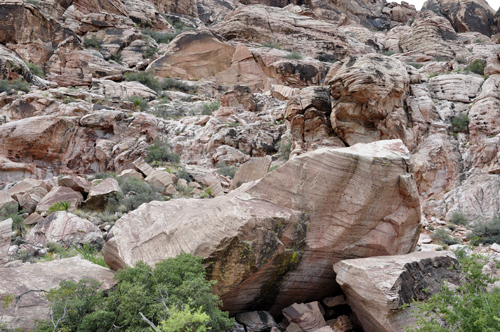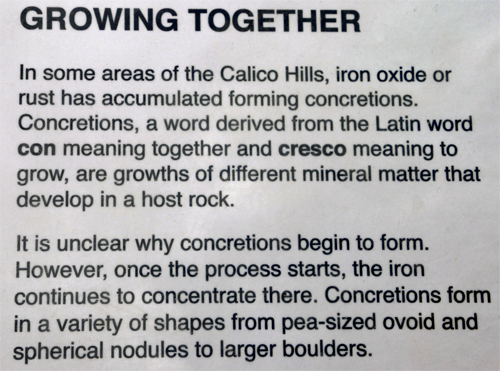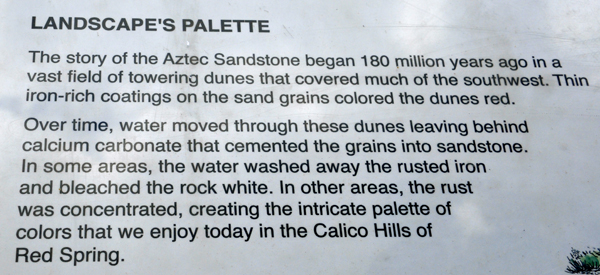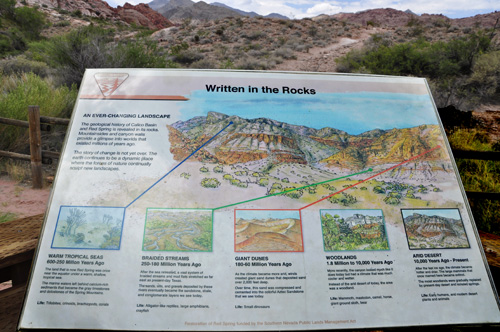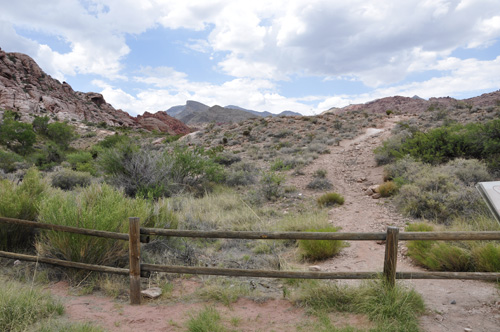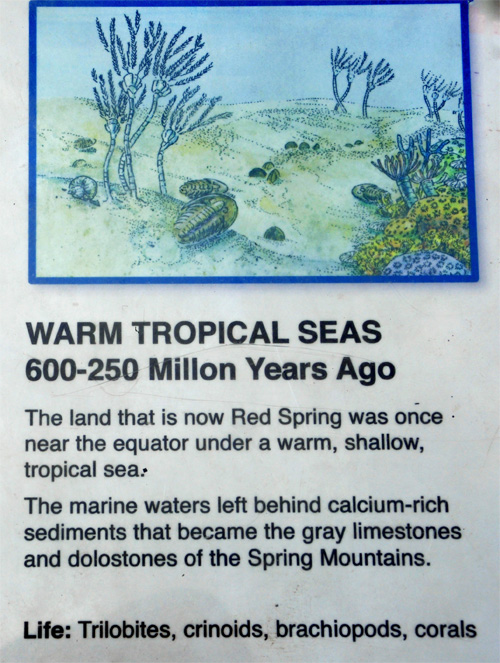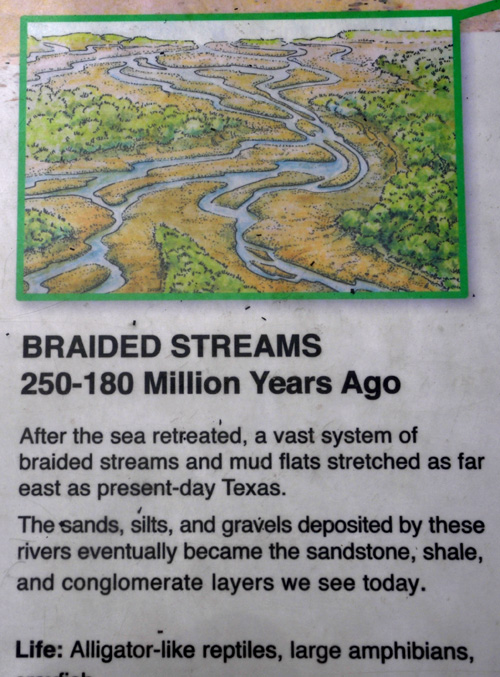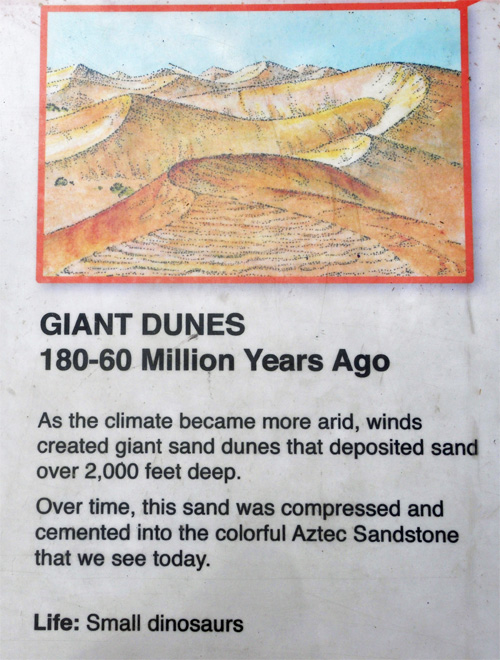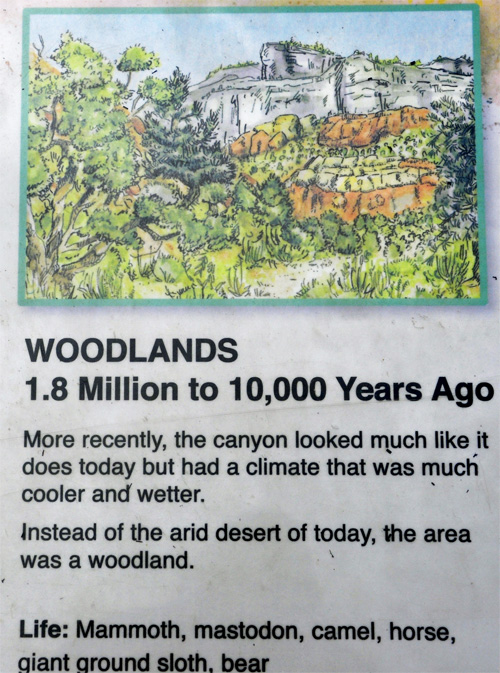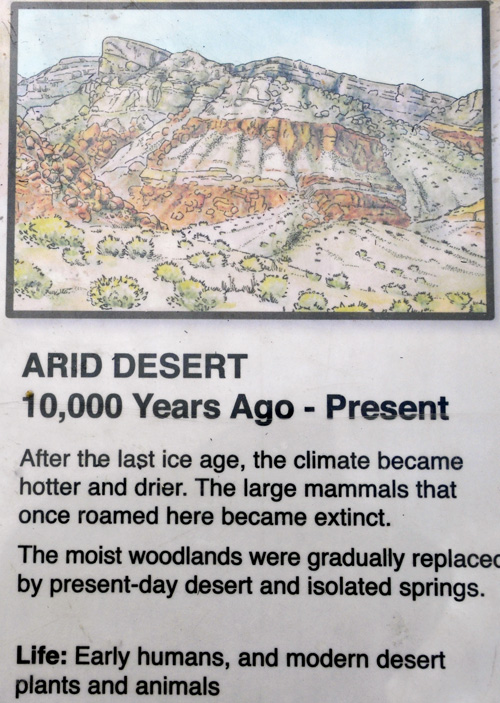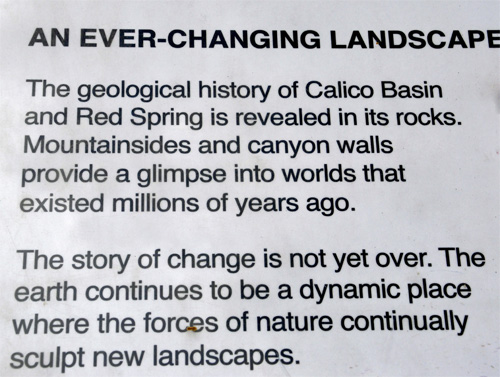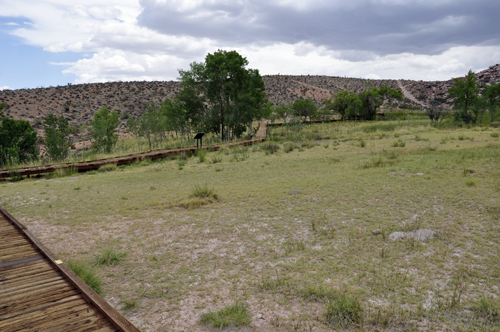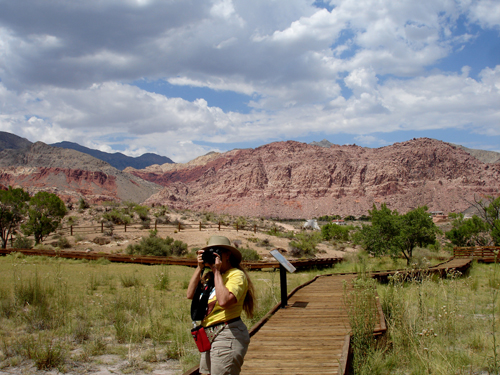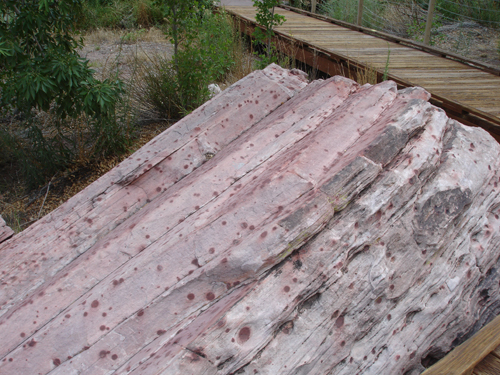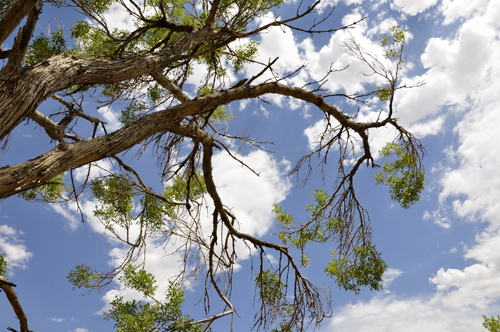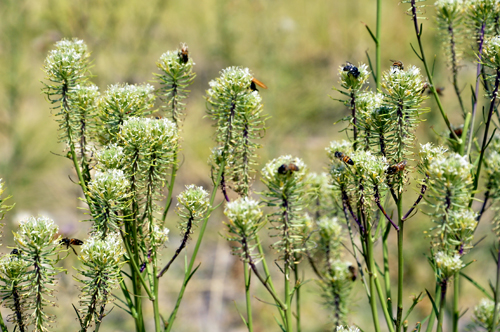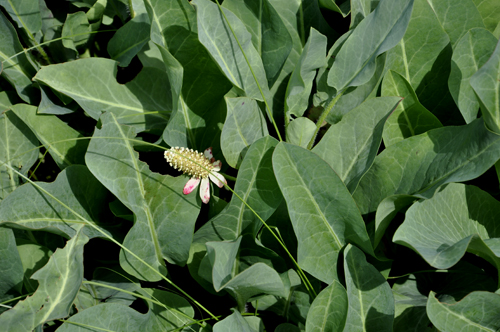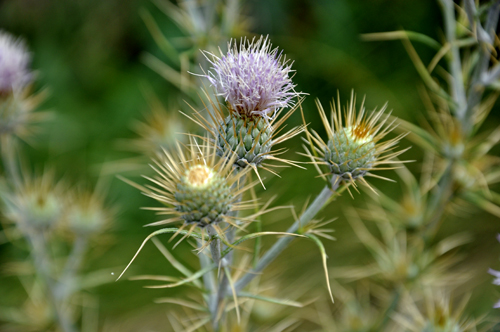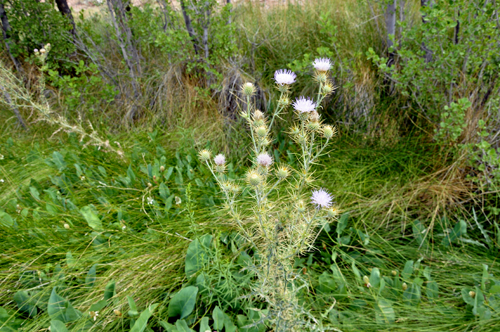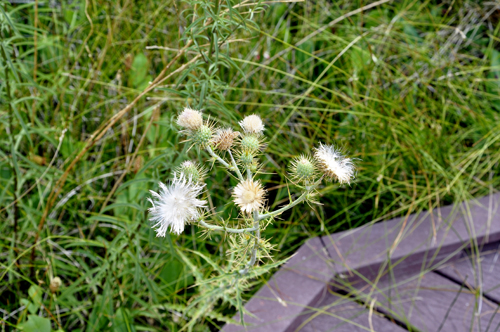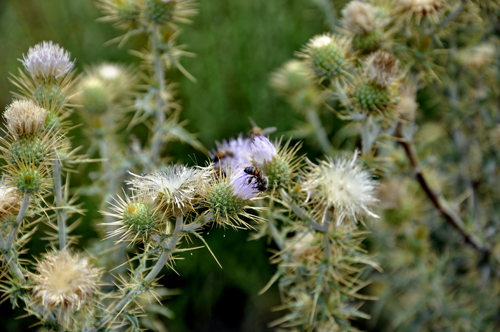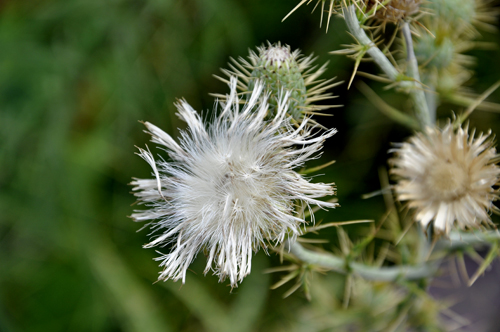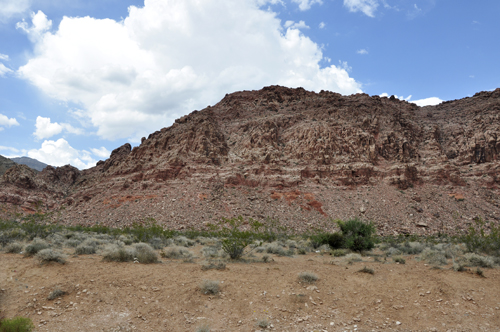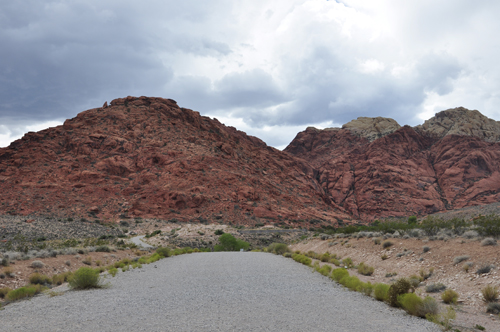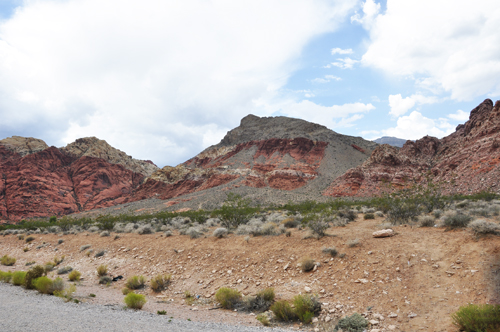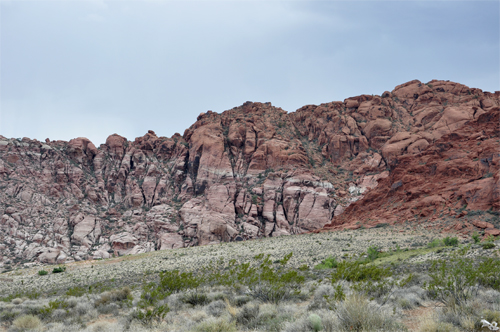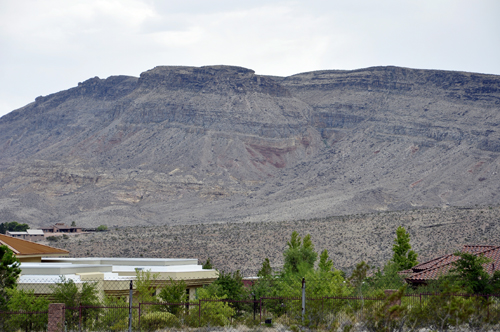Below: A round building seen
just before the two RV Gypsies entered the Red Springs area; |
|
|
This project in the Red Springs area is a result of management
alternatives developed to protect the habitat in this high use area. Red
Rock Canyon National Conservation Area is a Bureau of Land Management
area on the western edge of the Las Vegas Valley. This area,known as Red
Spring, the Red Springs area, or Calico Basin, is sheltered and moist,
making it attractive to a wide variety of birds and other wildlife. |
The two RV Gypsies saw a Desert Cottontail but it ran
so fast that Karen Duquette could not photograph it. So she just took
a picture of the sign. |
|
Below: Karen Duquette was able to photograph
a little chipmunk even though it also moved very quickly. there is also
a small bird in the photo. |
|
|
|
Below: There is a boardwalk that circles
the entire area with easy walking that allowed the two RV Gypsies to enjoy
the site and experience interpretive areas while allowing sensitive riparian
habitat to remain protected.
A wooden boardwalk within the fenced area at Red Spring educates the
public to the sensitivity of Red Spring. Allowing the public access into
the enclosure on a defined path keeps visitors from trampling sensitive
areas. |
|
|
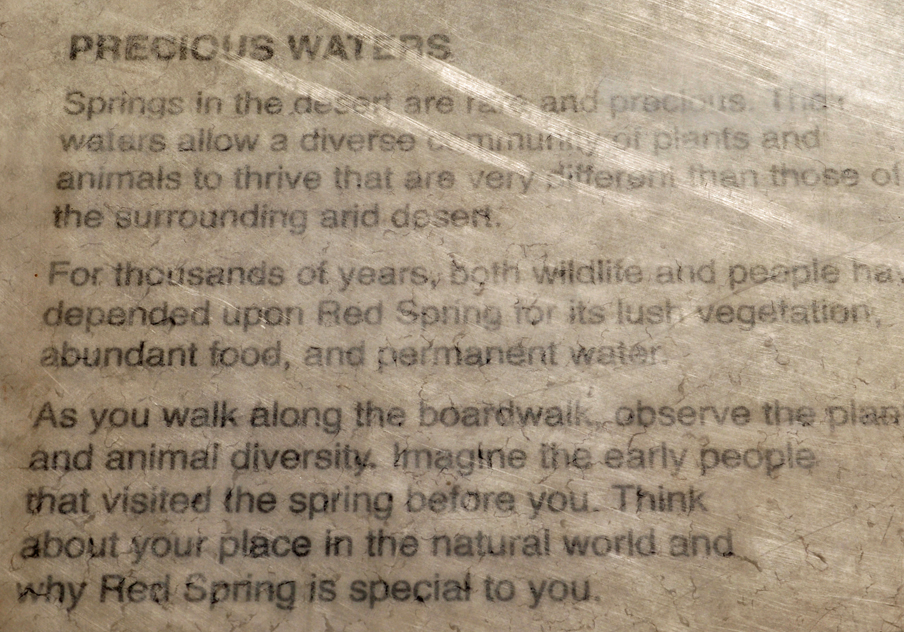 |
Below: Red Spring is part
of Red Rock Canyon (Red Rock National Conservation area) |
|
Hugging the base of towering dunes, the boardwalk allowed
the two RV Gypsies to be close enough to see the effect of what iron rich
coatings on grains of sand and calcium carbonate from water has done to
these dunes both bleaching the rock white, then accenting it with the
deepest reds resulting in patterns of red spots, bumps and marbles (see
below for explanation of spots, bumps and marbles). |
 |
|
 |
Below: As the two RV Gypsies started their walk on the
boardwalk, they found themselves amazed by the beauty all around them.
This is why they love being RV Gypsies and traveling for so many months
each year. |
|
|
|
|
|
|
|
Below: Signs explained that ancient springs once flowed
here, plus showed a photograph of the area where the spring once flowed. |
|
|
|
DIFFERENT TYPES OF ROCKS: The
two RV Gypsies were fascinated by the spots, bumps, and marbles on the
rocks. |
|
The rock below looked like it had chicken
pox.  |
|
|
|
|
|
|
Below: Swiss cheese anyone??? |
|
Hopefully, you have visited other pages on this website
and have already learned about Petroglyphs and Pictographs. But in case
you skipped those pages, here are signs explaining the difference between
Petroglyphs and Pictographs.
(More information and photos can be found under the Red Letter P at the
bottom of this page) |
|
|
|
|
|
|
|
|
|
|
|
|
|
  Below:
Some important signs telling how this exact area looked from 600 million
years ago through today. The sign on the left side below demonstrates
how areas in the photo below on the right looked in the past. Karen photographed
each section of the sign separately so they are big enough to be read
- so just scroll down and be amazed. Below:
Some important signs telling how this exact area looked from 600 million
years ago through today. The sign on the left side below demonstrates
how areas in the photo below on the right looked in the past. Karen photographed
each section of the sign separately so they are big enough to be read
- so just scroll down and be amazed.
|
|
|
|
|
|
|
|
|
Below: The two RV Gypsies approached the end of the boardwalk and their
adventure at Red Spring. |
|
|
Below: A big rock that
previously fell from the mountain and landed beside the boardwalk. |
|
Below: A tree and some flowers
(some with bees on them) that Karen Duquette enjoyed photographing. |
|
|
|
|
|
|
|
|
Below; Back in their car, the two RV Gypsies stopped for
a few more photos of the scenic area. |
|
|
|
|
|




